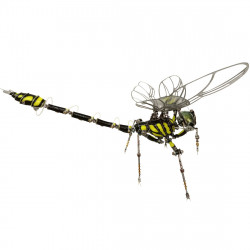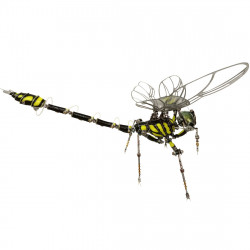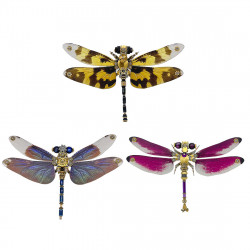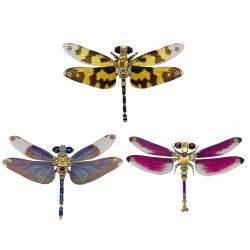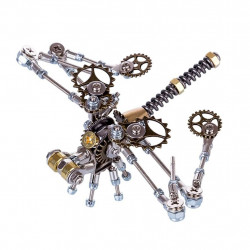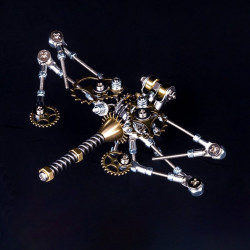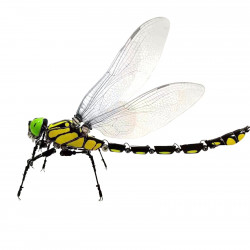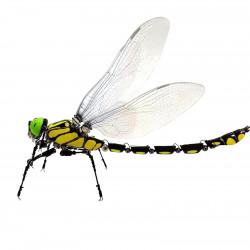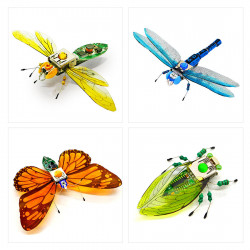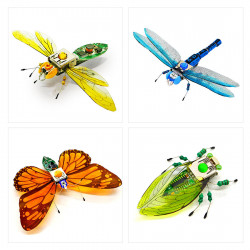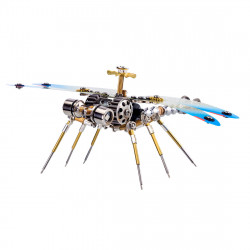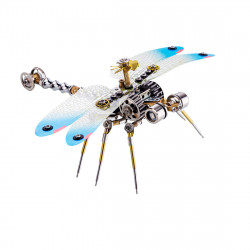Dragonfly Lovers
The Dragonfly: Spiritual Meanings and Symbolism
In many ways, animals are important in our lives. Animals have offered food, transportation, and company to people for as long as they have existed.
Beyond that, however, they also play a role in the inspiration, rituals, spirituality, and beliefs of many cultures.
For instance, some people think that animals are the reincarnated souls of loved ones or that they are a messenger from the spiritual realm. Others find that animals are a powerful symbol of particular human traits, attributes, or life experiences, and that they can provide solace in trying times.
The dragonfly has long been seen as a positive message and a harbinger of good things to come. Are you attracted to dragonflies, or have you recently seen one? If so, a lot of civilisations think that the universe might be attempting to tell you something.
What is a Dragonfly?
Before delving into the meaning of this lovely insect, you might be wondering if you've ever seen one. Despite their wide range of colours and patterns, dragonflies all share the following traits:
- Dragonflies have long, slender bodies.
- They have two sets, totaling four long, transparent wings.
- They have two large eyes that make up most of their head.
- Dragonflies have six short legs attached to their thorax.
- They typically live near water.
- The entire transformation from aquatic larva to adult dragonfly, known as emergence, completes the three phases of the adult dragonfly's life cycle.
Cultural Symbolism of the Dragonfly
The dragonfly has been used in storytelling and art by many cultures. It has sent messages to those who have grasped its meaning, carried omens, and reflected beliefs throughout human history. Many people still look to spiritual dragonfly images today to find meaning, connect with the force of nature, and guide them on their earthly journey.
- The dragonfly, also referred to as katsumushi or the "invincible insect," was a popular emblem of might among Japanese warriors.As a sign of courage and strength, dragonflies were worn on the armour of Japanese samurai warriors.
- Dragonflies, according to the Japanese, also carried the spirits of departed loved ones.
- According to Swedish custom, dragonflies had a sinister function and would hover close by to gauge how pure your spirit is.
- Furthermore, the dragonfly meant different things to Native Americans, Chinese, Europeans, and Africans, depending on their interactions with the creature.
Animal Symbolism Explained: The Dragonfly
Here are some powerful meanings behind the dragonfly:
Do Not Resist Change. The dragonfly represents significant change and metamorphosis in many cultures. One thing we can be certain of during our time here on Earth is that things are always changing. The dragonfly serves as a great reminder to embrace change and be flexible.
Welcome Good Fortune. Many people believe that the cosmos is bringing you good things if they are lucky enough to have a dragonfly fall on them.
Move with Balance and Stability. Some people believe that the dragonfly is the animal representation of a tranquil life. To provide stability and help it withstand any challenge life presents, its four long wings extend out.
Be Open to Your Higher Self. The dragonfly is highly revered by many as a symbol of an enlightened self. A visit from a dragonfly is often interpreted as a sign that you are on the right track. The Spirit and a higher good are connected to your higher self.
Health and Wellbeing. Many cultures believe that a dragonfly flying into your home portends the end of your illness and the arrival of good health.
Embrace a New Beginning. Dragonflies undergo a direct metamorphosis from the larval stage to adulthood, leaving behind a cast of their previous selves, in contrast to many other insects. The dragonfly's dramatic metamorphosis serves as a reminder of the beauty of a spiritual rebirth and the fact that growth and agony are followed by a stronger, new self.
Frequently Asked Questions
What do the colours of the Dragonfly represent?
Each of the many colours of dragonflies has a unique meaning and connotation.
- Black means strength and mystery.
- Red represents passion, power, good luck, and protection from harmful or evil forces.
- Brown is believed to bring nurturing and healing.
- Blue delivers loyalty, trust, and creativity
- Yellow is the representation of optimism and abundance
- Orange means individuality, happiness, and sexuality.
- Green represents prosperity and connectivity with nature.
Does the Dragonfly's spiritual meaning represent love?
The symbolism of the dragonfly has been interpreted spiritually for as long as human history has been documented. Many religions, spiritualities, and cultures hold the view that it is a symbol of hope for the future, transformation, love, and good fortune. The uniqueness of a dragonfly's messaging can also be affected by its colour.
What does it mean when you see a Dragonfly?
Many people consider a dragonfly's visit to be a sign of good fortune, an impending transformation, or the arrival of a loved one from another realm.
